
Filter News
Area of Research
- (-) Biological Systems (18)
- (-) Computational Engineering (5)
- (-) National Security (79)
- (-) Nuclear Science and Technology (74)
- Advanced Manufacturing (34)
- Biology and Environment (177)
- Biology and Soft Matter (5)
- Building Technologies (12)
- Chemical and Engineering Materials (4)
- Chemistry and Physics at Interfaces (11)
- Clean Energy (522)
- Climate and Environmental Systems (14)
- Computational Biology (6)
- Computational Chemistry (5)
- Computer Science (19)
- Data (1)
- Earth Sciences (1)
- Electricity and Smart Grid (3)
- Energy Frontier Research Centers (14)
- Energy Sciences (5)
- Fossil Energy (3)
- Fuel Cycle Science and Technology (3)
- Functional Materials for Energy (16)
- Fusion and Fission (54)
- Fusion Energy (17)
- Geographic Information Science and Technology (3)
- Isotope Development and Production (3)
- Isotopes (35)
- Materials (433)
- Materials Characterization (2)
- Materials for Computing (36)
- Materials Synthesis from Atoms to Systems (13)
- Materials Under Extremes (12)
- Mathematics (1)
- Neutron Data Analysis and Visualization (4)
- Neutron Science (190)
- Nuclear Systems Modeling, Simulation and Validation (3)
- Nuclear Systems Technology (1)
- Quantum Condensed Matter (4)
- Quantum information Science (9)
- Reactor Technology (1)
- Renewable Energy (4)
- Sensors and Controls (5)
- Supercomputing (311)
- Transportation Systems (11)
News Type
News Topics
- 3-D Printing/Advanced Manufacturing (6)
- Advanced Reactors (12)
- Artificial Intelligence (13)
- Big Data (7)
- Bioenergy (6)
- Biology (5)
- Biomedical (6)
- Biotechnology (1)
- Buildings (1)
- Chemical Sciences (2)
- Clean Water (1)
- Climate Change (6)
- Computer Science (24)
- Coronavirus (3)
- Cybersecurity (19)
- Decarbonization (3)
- Energy Storage (2)
- Environment (7)
- Exascale Computing (1)
- Frontier (1)
- Fusion (9)
- Grid (6)
- High-Performance Computing (5)
- Isotopes (5)
- Machine Learning (13)
- Materials (2)
- Materials Science (6)
- Mathematics (1)
- Molten Salt (4)
- Nanotechnology (1)
- National Security (34)
- Neutron Science (9)
- Nuclear Energy (40)
- Partnerships (4)
- Physics (3)
- Quantum Science (1)
- Security (11)
- Simulation (1)
- Space Exploration (5)
- Summit (3)
- Sustainable Energy (4)
- Transformational Challenge Reactor (3)
- Transportation (2)
Media Contacts
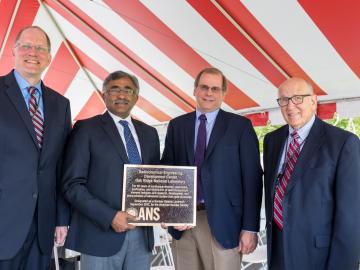
The American Nuclear Society has designated the Radiochemical Engineering Development Center at the Department of Energy’s Oak Ridge National Laboratory an ANS Nuclear Historic Landmark, recognizing more than 50 years of isotope production and nuclear fuel cycle resear...

Thanks in large part to developing and operating a facility for testing molten salt reactor (MSR) technologies, nuclear experts at the Energy Department’s Oak Ridge National Laboratory (ORNL) are now tackling the next generation of another type of clean energy—concentrating ...

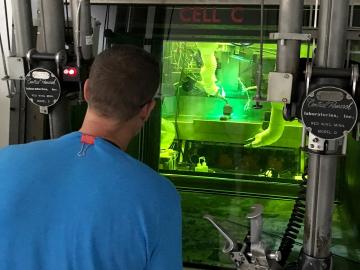
Scientists of the Department of Energy’s Light Water Reactor Sustainability Program (LWRS) and partners from the Electric Power Research Institute (EPRI) have conducted the first weld tests to repair highly irradiated materials at DOE’s Oak Ridge National Laboratory.
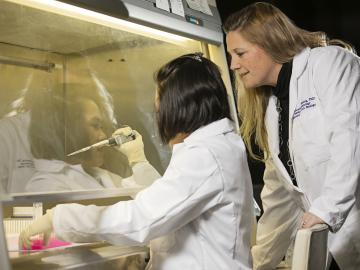

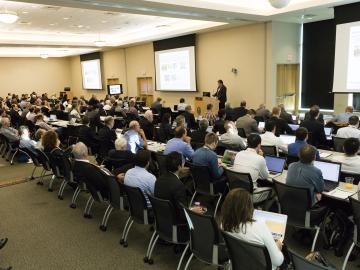
The third annual Molten Salt Reactor Workshop allowed leading voices on advanced reactors—including scientists from the national laboratory system, the Nuclear Regulatory Commission, reactor design firms and universities—to discuss current efforts in molten salt reactor work and pu...

For many scientists and engineers, the first real test of their mettle comes not in a classroom, but in a lab or the field, where hands-on experience can teach volumes. For Susan Hogle, that hands-on experience just happened to be with material that was too hot to handle—literally....

After more than a year of operation at the Department of Energy’s (DOE’s) Oak Ridge National Laboratory (ORNL), the COHERENT experiment, using the world’s smallest neutrino detector, has found a big fingerprint of the elusive, electrically neutral particles that interact only weakly with matter.
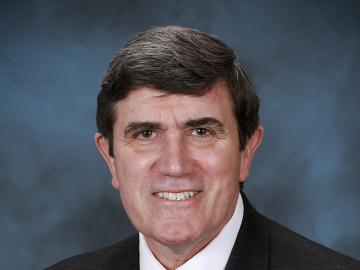
Brian Davison, a researcher at the Department of Energy's Oak Ridge National Laboratory, has been awarded a 2017 fellowship by the Society for Industrial Microbiology and Biotechnology (SIMB).


